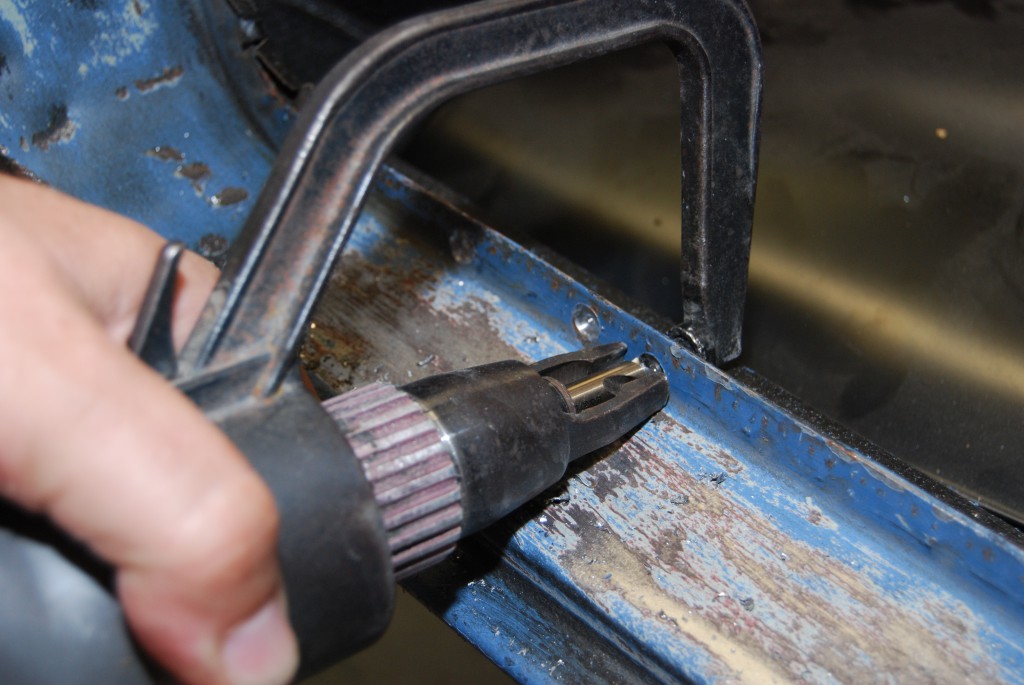Patch Panels Without Welding
- Posted in:Admin
- 01/05/18
- 69


No-Weld Panel Repair Kit Instructions & Tech Tips The Eastwood is designed to make permanent patch panel repairs in steel and aluminum when a welder is not available. Repairs with patch panels or custom fabricated panels utilizing our panel adhesive can be done with structural integrity far superior to rivets themselves. Keyence Plc Simulation Software on this page. Repair fenders, quarter panels, trunk floors, firewalls, doors or floor pans quickly and permanently without welding. Contents Your Eastwood No-weld Panel Kit Contains the following items: • 5/8' Panel Flanger • 1 Dimpling Pliers • 1 Compression Pliers • 20 1/8' Blind Holders • 3 Side Grips • 1 Panel Adhesive with caulk gun adapter (fits any standard caulk gun.) Instructions STEP 1: Remove all paint from damaged area to expose bare metal. Keep removing paint to expose 1-2' of corrosion-free metal around damage, using our and or 'DA' sander with 180 grit paper.
Scribe cut lines at least 2' from damage or near panel edges or parting lines. TECH TIP: Cut lines can also be made under wide side molding or trim, if available. STEP 2: Feather paint 2-3' around cut lines for later blending.
Cut out on scribe lines using our Drill Nibbler or Pneumatic Nibbler. A hand nibbler or shear can be used, but will be a little more difficult. STEP 3: Begin using the panel flanger to neatly and accurately flange around the opening of the cutout section. Adjust the vise grip to produce a deep enough flange for a flush repair.
Check flange with a piece of scrap metal of the same gauge to make sure the flange is correct and both pieces form a level surface. STEP 4: Layout the dimensions of your cutout area on a piece of cardboard, cut to exact shape and transfer to you patch panel, measuring from the outside of your flange. Adobe Creative Cloud 2015 Keygen For Idm.
Die Zeitritter 3 here. Using adhesive instead of welding body. Quarter panels or floorpans without welding. Has anyone used an adhesive for installing rear quarter patch panels. In a few areas on my car I have used my MM210 Mig to weld in patch panels on the car, tacking every inch or so, jumping around and letting it cool.
Cut to shape and check for correct fit, using a straight edge, as shown. Adjust patch panel by carefully trimming to fit level and flush all around flange area. NOTE: Patch panel should be same gauge as original panel. STEP 5: Now layout the rivet pattern on patch panel, keeping rivet holes centered in overlap area: this kit is setup to utilize #4 flush rivets.
You should start the rivet layout at a corner to assure it lays flat when completed, space rivets about 3/4' to 1' apart. This will depend on the area of the patch.
If the patch is only 5' long by 3' high, then use a spacing of 3/4'; if the patch is larger, then use the 1' spacing. You will have to use your judgment on rivet placement when nearing edges or opposite corners. TECH TIP: Use only and patch panels on aluminum, and and patch panels on steel. STEP 6: After the rivet pattern is laid out accurately, clamp the patch panel in place using supplied edge clamps and c-clamps if needed. Make sure to check for flush (level) positioning of panels using the straight edge as before. Start drilling the rivet holes, with a 1/8' bit, beginning in a corner, using supplied blind holders in drilled holes to help secure panel. Once holes are drilled, remove clamps and patch panels and deburr all holes; this will assure a flush repair in the end.